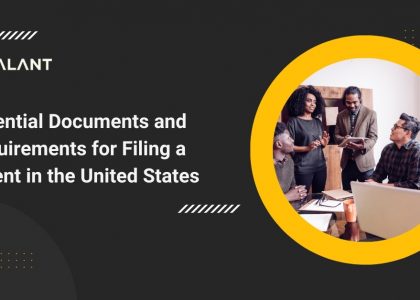Protect your invention with a patent.
A patent gives you control over the way your invention is used, and it can give you an edge over competitors. Filing a patent in the USA can be difficult, but it’s worth the effort.
Patents are essential to businesses. They give companies an exclusive right to produce or sell products that have unique features. In the United States, patent laws are very strict, and it can be difficult to win a patent. This article will provide tips on how to file a patent in the USA, and it will outline some of the key considerations that you need to take into account.
There are several steps that you need to follow if you want to file a patent in the USA. Make sure that you fully understand the process before you begin. Also, make sure that all of the necessary paperwork is in order so that you avoid any embarrassing delays or setbacks. Finally, be prepared to spend a bit of money on legal fees and other associated costs. But by following these guidelines, you can successfully protect your invention and get ahead in the market.
Letting others know about your invention can be one of the most rewarding experiences of your life. But what if someone comes up with a similar product or idea? This is where patenting comes in. The primary part that comes in key considerations is the types of patent applications.
What are the two types of Patent applications?
Patent applications are of two types:
- Provisional Application: It is affordable to file a provisional patent application. If you come up with an innovation, you should submit a provisional patent application as soon as possible to take advantage of the benefits of filing a patent application more quickly. Without any declarations, claims, or details regarding prior art, you can submit a provisional patent application. For non-provisional applications, you have twelve months to submit them. The USPTO publishes your application after eighteen months from the filing date. If you see a violation, you can file a lawsuit using the application.
- Non-Provisional Application: Your primary application for a patent is a non-provisional patent. It should include all of the assertions, written justifications, illustrations, etc. A patent examiner examines an unrestrictive patent application. A provisional patent application can be submitted on your own if you have a limited budget. However, it may be beneficial to get professional advice when filing a non-provisional patent application to prevent making expensive errors.
What is the next step after filing a provisional patent application?
Within twenty-one months of the earliest filing date (the date of filing a provisional patent application—the USPTO must publish a patent application that has been filed in its official gazette. The USPTO uses that filing date if you only filed a non-provisional patent application and skipped the provisional application.
A patent examiner is assigned after your patent application is published, depending on the invention’s technical field. Your attorney and your patent examiner will then start talking to one another. Both the communication and the procedure are referred to as patent prosecution.
An examiner may reject your patent more than once throughout the patent prosecution phase. These rejections will either be regarded as final or non-final rejections. A non-final denial indicates that the examiner will give you another opportunity to present your case. In this scenario, the examiner explains why your patent cannot be awarded for factors like if your invention is too obvious, not original, or lacking in any industrial applications.
You are still allowed to reopen the prosecution process and begin over even after receiving a final denial. You need to submit a Request for Continuation Exam. Every time an office action is taken, the expense of filing a patent goes up—in terms of filing fees and, most likely, attorney fees as well.
Submitting a patent puts your invention and patience to the test. When navigating such a complex system, anxiety can develop. It can be reduced by having a prior awareness of what will occur next, how long it might take, how much money you might have to pay, what options are available, etc.
Conclusion
If you have an innovative invention, do you want to protect it? While patenting your invention may seem like a daunting task, don’t worry; there are key considerations you need to take into account before filing.
Patents are a valuable asset, and rightly so. They can protect an invention from being used by others without permission, and they can lead to more revenue and Profits for the inventor. However, filing a patent in the United States can be a complex and time-consuming process. Stay ahead of your competitors by being the first to protect your invention by patenting it. Brealant is a well-known firm that provides IP-related services worldwide. You can get in-depth details about the patent process from their experts.




